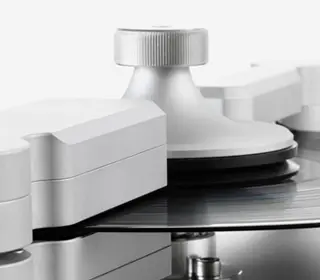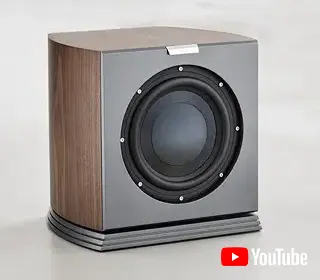Setting up active subwoofers correctly
The correct positioning of subwoofers is often discussed. Unfortunately, people rarely talk about how to set them up correctly when they are already in the best possible position. The following tips from Raphael Vogt, editor of the renowned online magazine "lowbeats", will help you integrate a subwoofer into your hi-fi or home theater chain.
Basics for better bass: Never put the unit in the corner!
The first thing to say about the set-up is:
Placing it in one of the corners is almost always a bad idea, placing it near the speakers it is supposed to support is almost always a good idea.
One thing is certain:
If it booms, the subwoofer is upside down.
This basic consideration is part of setting up the woofer correctly:
Would you like to A.) only supplement the frequency response of the system downwards?
Or would you like to B.) also increase the dynamics and possibly the achievable sound pressure of the overall system?
In the second case, it becomes a little more complicated and you also have to take care of the correct filtering of the main speakers.
In the simple case A, you can control the subwoofer via an RCA cable or often even via the speaker cables.
This is the option to choose for older or very high-quality preamplifiers or integrated amplifiers.
It certainly works, but you only have a few setting options.

Analyze the room
When integrating a subwoofer, it is ideal to use an amplifier or receiver with complete bass management.
Virtually all AV amplifiers/receivers (but increasingly also modern stereo amplifiers/receivers) nowadays offer a separate subwoofer output via cinch or XLR as well as setting options for the level, crossover frequency and delay for both speakers and subwoofer.
With such a mimic, it is quite easy to influence how the speakers of the system behave with each other.
EOne thing first though:
Anyone who thinks they can adjust and tune a subwoofer with their ears alone is mistaken.
You'll be trying for weeks and never get to the end.
So a little measuring is a must.
But it's not rocket science and you'll easily achieve a good result – that's a promise! If you do not have a measuring mimic in the amplifier or receiver, you will need an external measuring device. A smartphone app that generates a test noise and displays the frequency response is best. These apps, known as "Audio Analyzer" or "RTA" (Real Time Analyzer), are available for Apple and Android. The important thing is: It must offer a real-time display with averaging (inertial) and at least 30 frequency bands accurately (one-third octave band). The app shows you very quickly where you still need to make changes. For example, if you play pink noise on the speakers and the subwoofer, the bass should be displayed as loud as the bass-mid-range, measured at the listening position.
Interview on the subject of subwoofer basics
At the in-akustik HiFi-Convention. we had the opportunity to interview Raphael on the subject of "Subwoofer Basics". The following topics were addressed, among others:
- The origin of the subwoofer
- Where does the *.1 (2.1; 5.1 etc) channel come from?
- Stereo loudspeaker + sub. What are the advantages?
- The designs
- How do I connect the subwoofer?
- Calibrating & placing the subwoofer
- At what frequency should I disconnect?
- Audessey
- Avoid hum from the subwoofer
- What to do if there is a drone in the room?
- Budget?


Guest article: Record cleaning
How record cleaning affects the quality of your music playback. Record cleaning from "cheap" to high-end.

Guest article: Setting up active subwoofers correctly
The correct positioning of subwoofers is often discussed. Unfortunately, all too rarely about how how to set them when they are already positioned in the best possible way .

Guest article: Improving room acoustics with on-board resources
Does your music room sound too bright? Then improve the acoustics in just a few steps. But please avoid egg cartons. They belong in the fridge, not on the wall ;-)

Guest article: Optimizing streaming
Streaming is very easy thanks to a range of apps and smart streaming players, but there are pitfalls and a lot of potential for optimization if you want it to sound really good.
